Toy Story’ franchise has established itself as one of the most iconic and beloved films of all times. Catering to young as well as matured minds, ‘Toy Story’ not only fulfills the dream of every child but also, with American Animator John Lasseter, comments on the society to speak the language of the real world.
With Lasseter’s masterful grasp at understating the young souls and Lee Unkrich’s commanding inheritance of creativity, ‘Toy Story 3’ was an immediate critical and commercial success. While the film was divisive among critics, ‘Toy Story 3’ has since gone on to become one of the best animated films of all times.
Plot Summary
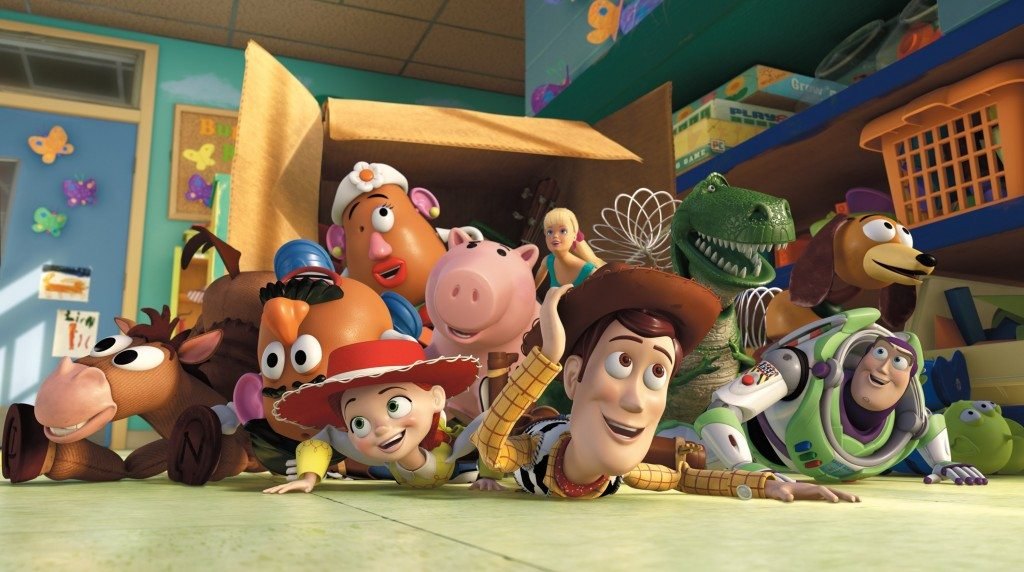
Andy, now a 17-year-old young man, is heading to college. With his toys abandoned through the passage of time and some of them sold off, the toys’ future looks bleak. He decides to take Woody, his favourite toy, and puts the other toys in a trash bag to be stored in the attic. Shocked by the rejection, the toys are in complete disarray. The Army Men decide to leave and the toys decide to, as Woody puts it, “fulfill their responsibilities towards Andy”. Andy puts them into a black plastic bag, to put it into the attic. However, his attention is suddenly diverted and he leaves them in the middle of the corridor, and his mother mistakenly throws the bag out. Like his mother, the toys too think that they were being thrown out, and decide to take matters into their own hands, climbing into a donation box destined for Sunnyside Daycare. Woody, who tries to persuade them into coming back, follows them in a last attempt to clear their misconceptions but fails miserably.
Once in Sunnyside Daycare, the toys are welcomed by Lots-O’-Huggin’ Bear and the other toys at Sunnyside. Although Woody is quite cold towards him, the other toys are delighted as they learn that Sunnyside never runs out of children to play with.
Leaving his toy family behind, Woody attempts to return home, but in a failed attempt to fly home with the aid of a kite, is found by Sunnyside student Bonnie, who brings him home and plays with him and her other toys, which are quite well-treated, almost like heroes. As he engages in some chit-chat with the other lovely toys, Woody learns from Chuckles, another fellow toy, that he, Lotso, and Big Baby were once the part of a “family” owned by a little girl named Daisy, but were lost during a family trip. While they take the arduous path of coming back to their beloved owner, they find out that Lotso had been replaced by another bear toy. Broken and battered, Lotso believes Daisy had replaced all of them and becomes corrupt out of agony. While searching for a new shelter, they ultimately find Sunnyside, and Lotso takes over, turning into a maniacal dictator.
Horrified, Woody starts planning to rescue his mates but is warned by Chuckles that Sunnyside is inescapable and that he could escape because Bonnie took him home for repair.
Back at Sunnyside, toys’ worst nightmares come alive with the toddlers’ rough play. Buzz, taking lead, asks Lotso to move the toys to the older children’s room, only to fail and be forced into being restored by Lotso’s men to original factory setting, which also erases his memory. Things turn from bad to worse as Mrs Potato Head, through the eye she lost in Andy’s room, sees Andy searching for them, realizing that all this while, Woody was telling the truth. They try to escape but are imprisoned by Lotso’s henchmen.
As things seem bleak, Woody returns to Sunnyside to save his buddies. In the attempt to do so, learns from a Chatter Telephone that the only way out is through the trash. While Woody plans to save them, he is ambushed by Buzz. With the help of his friends, Woody manages to out power Buzz but accidentally reset him to Spanish mode instead of his old persona. The new “lover” Spanish Buzz chooses to assist Woody, falling in love with courageous Jessie in the process. As the toys finally reach a dumpster, they are caught in the act and are cornered by Lotso’s gang. The tension rises as a garbage truck approaches, causing their chances to escape slim. Woody, in order to save his friends, divulges Lotso’s dishonesty to Big Baby. Although Lotso tries to bully Big Baby into working for him, he is thrown into the dumpster.
The toys try to leave and the henchmen retreat, seemingly ending the conflict. However, Woody is dragged by Lotso into the dumpster. As the truck collects the trash, the rest of the toys try to save Woody but fall into the truck. A falling television lands on Buzz, restoring his memory and personality. The truck brings the toys to a landfill, where the Aliens are swept away by spotting an industrial claw and the other toys are deposited on a conveyor belt that leads to an incinerator. Woody and Buzz help Lotso reach an emergency stop button, only for Lotso to abandon them and escape. While Lotso tries to run from the dumpster, the toys get completely stuck. Buzz’s original persona returns, but with the incinerator in sight, they ultimately walk up to their fate and prepare to die. However, with Aliens’ assistance, the toys are rescued. Elsewhere, Lotso, running to safety is found by a garbage truck driver, who ties him to his truck’s radiator grille and drives away. Woody and the other toys board another garbage truck which drives back to Andy’s house.
Once safe and back home, Woody climbs into the box of college supplies, while the other toys prepare for the attic. Woody, reminiscing about the wonderful Bonnie, leaves a note for Andy, who, thinking the note is from his mother, takes the toys to her house. Woody, getting teary-eyed chooses to unite with his friends, climbing into the box. As Andy, sees his favourite toy in the box, takes it out for himself, but to his surprise, Bonnie recognizes him. Hesitant at first, Andy chooses to pass Woody on to Bonnie. The film culminates as they play together, with Andy visiting his childhood one last time by showing Bonnie their powers.
Back at Sunnyside, Barbie, Ken and Big Baby cleanse the corrupt system and maintain contact with the other toys through letters. Adding to the happy ending, the Army Men parachute in Sunnyside, forming a beautiful utopia and culminating ‘Toy Story 3’.
Authority
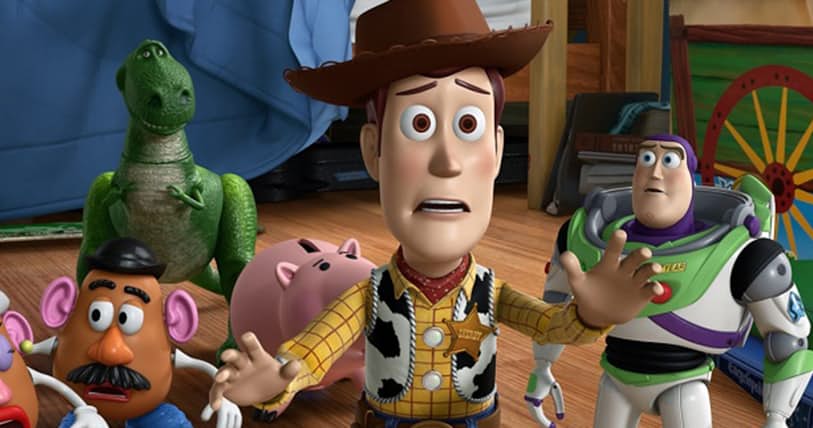
The major inciting theme of ‘Toy Story 3’ is the theme of authority. While both the first and the second installments dealt with authority in a variety of subtle ways, ‘Toy Story 3’ brought forth the idea of authority and surveillance to serve the major narrative.
Many critics have noted the ‘Toy Story’ is structured on communism and Andy acts as a leader heading the political structure. As the narrative progresses, we learn that Andy is now an adult and the toys are seemingly mere memories. The adult Andy, to their utter dismay, has not played with them for years. As the toys decide to leave Andy, Woody argues that they owe Andy their eternal love and responsibly.
In other terms, the structure of communism starts crumbling. Even though Woody knew that they would not be played with anymore, he believes that they serve a purpose to Andy.
As Andy’s mother threw out the bag consisting of his toys, mistaking it for a trash bag, the toys grow distant and disheartened. However, with collective effort, the toys manage to escape into a donation box, destined for Sunnyside Daycare. Nervous and anxious of their new world, the toys are wonderfully greeted by Lots-O’-Huggin’ Bear – who later turns out to be the main antagonist – the toys, to their immense pleasure, believe that they’ll have a great time.
However, as the narrative progresses, we learn that Lots-O’-Huggin’ Bear is an authoritarian and deceives the toys into being played by the toddlers’ horrific mishandling of them. Although the toys beg to “Lotso”, they are viciously declined and are imprisoned. Adding to their horror, the rigid surveillance makes it nearly impossible for them to escape.
In the branch of political philosophy, Renato Cristi posed the authority in his book ‘Hegel on Freedom and Authority’ (2005) as – “…the balancing of freedom and authority…”
Lotso, being a shrewd political authority, tells Buzz that he could have the freedom of being transferred to the “Butterfly Room”, as opposed to freeing all of the toys from the horrific children.
The idea of political authority practised by Lotso is quite similar to a dictatorship. In Natasha Ezrow’s book ‘Dictators and Dictatorships: Understanding Authoritarian Regimes and their Leaders.’ (2011), dictatorship is defined as “an authoritarian form of government, characterized by a single leader or group of leaders with either no party or a weak party, little mass mobilization, and limited political pluralism.” With Lotso’s muscle, Andy’s toys are left with sadness and grief. They are not treated equally and are controlled by the bear’s stringent unfair governance.
However, the film also comments on the importance of civil disobedience. The toys, coming together as a unifying team, overthrow Lotso’s dictatorship. Ken and Barbie, now a couple, transform Sunnyside Daycare into a democratic state, thus culminating the transformation from communism to dictatorship to democracy.
Compassion and Care
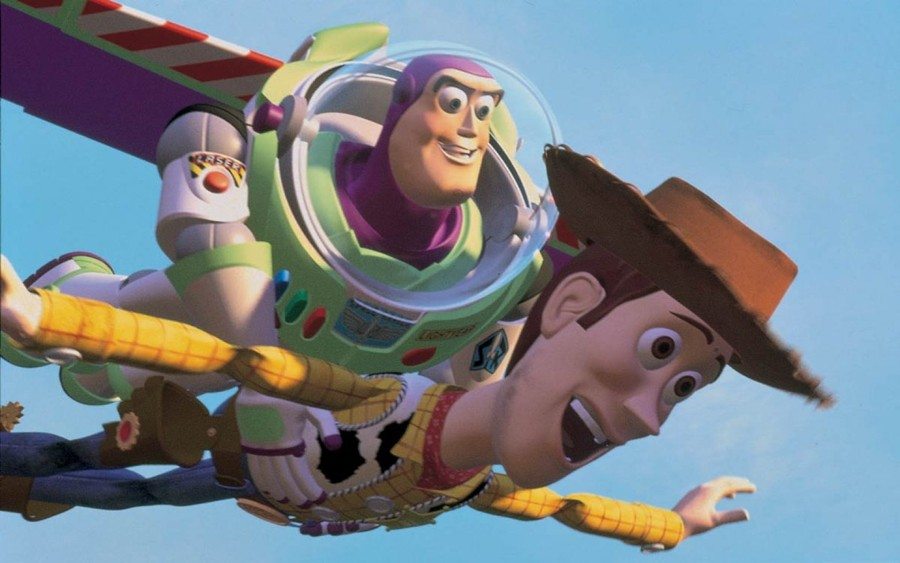
The theme of abandonment is also mirrored by love and compassion. As Andy grows up, he seems distant from the toys. However, while his adult body shows a cold outlook, Andy is shown to be increasingly caring and loving towards his toys, a factor which ultimately unites the toys to escape the Daycare.
In the second act of the film, Woody, stranded in the middle of a street, is collected by a girl named Bonnie. Unlike the adult Andy, Bonnie is loving and caring towards her toys, treating them with extra affection. As the narrative cultivates, Andy, now united with the toys, decides to give them to Bonnie. The scene culminates beautifully as Andy shows the various powers and abilities of the toys, as Bonnie looks with wondrous shiny eyes.
The film also poses the question of what might happen if compassion and care were snatched from someone’s life.
Lotso, broken and full of disdain, develops nihilistic tendencies. His arc reaches full circle when he states that all toys would be ultimately tossed into the garbage. With his hoarse voice and big frame, Lotso’s broken morale permeates through his hideous pink façade. He continually reasserts his nihilistic and amoral views when he breaks Big Baby’s pendant which had the picture of their previous owner and tells Ken that there were hundred million Barbie dolls like Molly. For Lotso, there is no chance for salvation. His broken persona reaches its pinnacle when he deceives the toys one last time in the incinerator.
Abandonment
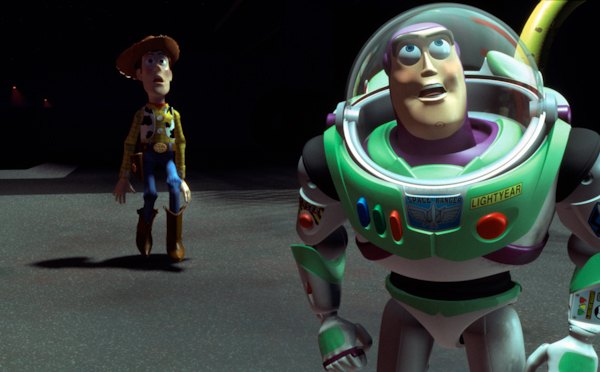
John Lasseter, while making ‘Toy Story’ said in an interview, “Toys are put on this Earth to be played with by a child.” This idea permeates through the trilogy and acts as one of the major themes of the film. In ‘Toy Story’, Woody is worried that he will be replaced the cooler toy Buzz and thus would not be played by Andy. In ‘Toy Story 3’, Jessie and Bullseye fear abandonment and persuade Woody to lead a better life for stardom. Similarly, in ‘Toy Story 3’, the narrative is incited by the toys’ belief that Andy would abandon them.
The film poses the theme of abandonment and maps it out throughout the narrative. Lotso acts the major character carrying forth this theme. When the seemingly endearing bear turns out to be a menacing monarch, one cannot help but hate the antagonist. However, as the narrative develops, we learn that Lotso, along with Baby and Chuckles, was once a beloved toy of a young girl named Daisy. A Christmas present, Lotso was a wonderful and loving bear whose heart broke when Daisy misplaced him and replaced him with another Lotso toy. Enraged with such deceit, Lotso breaks all moral principles to establish a corrupt system at Sunnyside Daycare.
Final Word
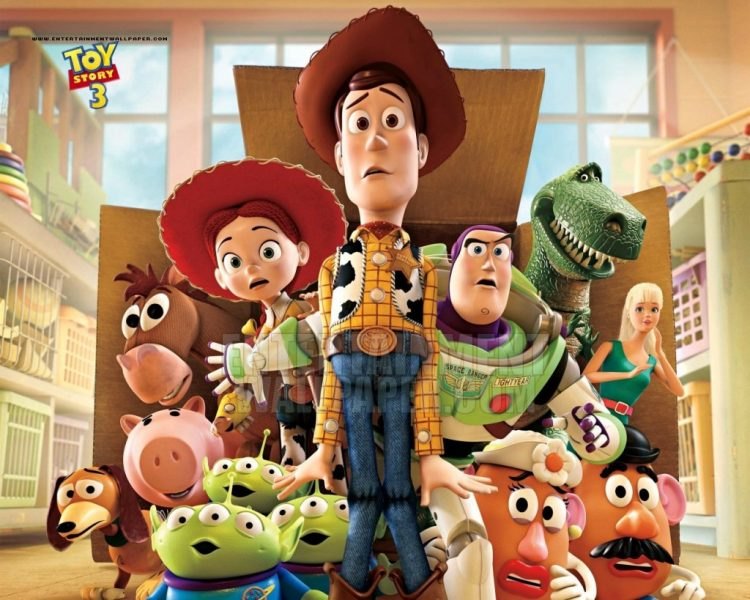
With its comprehensive approach traversing through a variety of themes and ideas, ‘Toy Story 3’ is certainly a dexterously woven work of art. From indulging in political themes such as communism and dictatorship to literary themes of compassion and care, ‘Toy Story 3’ is a complete package. The astute direction by Unkrich, the film not only packs a punch of reality but creates an atmosphere of entertainment, comedy and drama.
As A. O. Scott of The New York Times noted, “This film—this whole three-part, 15-year epic—about the adventures of a bunch of silly plastic junk turns out also to be a long, melancholy meditation on loss, impermanence and that noble, stubborn, foolish thing called love.”
Read More in Explainers: Lost in Translation | Ex Machina | Solo: A Star Wars Story

You must be logged in to post a comment.